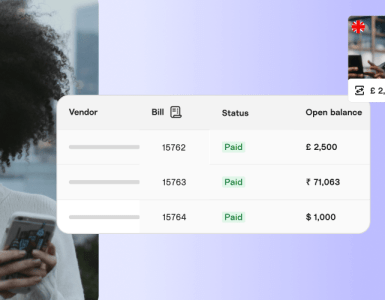
Cold pitching 101: How to Cold Pitch to Investors – successfully.
You should always try and get an introduction to an investor before you go in with a cold pitch. Without question, third party validation helps open the door. What do you do when there’s no one in your personal network that can introduce you to a key investor? Well, you cold pitch.
Aaron Levie from Box got their first investment from not only writing a pitch, but writing a cold pitch to Mark Cuban – so it’s not a total shot in the dark, you just have to make sure you cold pitch well.
Cuban was the first investor that responded. He wrote us a check without meeting us. Share on X
Cold pitching also worked for us – we managed to get three angel investments for Twine from cold LinkedIn pitching.
But first… what is cold pitching?
Cold Pitching 101: What is Cold Pitching?
Have you ever emailed or sent a well-crafted LinkedIn message to a stranger on the internet? After the amount of research you probably did, they may not feel like a stranger – but the reality is, they are.
Well, this is what a cold pitch is. Essentially, you’re reaching out to investors within your startup’s industry and pitching the idea of your startup to them, usually online.
As a lot of spambots also operate this way, so you need to let your investor know immediately that that isn’t what this is – introduce yourself and your business within the first line, followed shortly by why they should want to do business for you.
Cold Pitching 101: 11 Tips for Excellent Cold Pitching
Following our tried and tested cold pitching process, here are a few lessons we learnt along the way:
1. It will only work with non-traditional angel investors or VC funds.
2. A non-traditional angel is someone that has done less than three angel investments or has only used a crowdfunding platform.
3. A VC’s job is to speak to startups but they are very busy. Patrick Mathieson, from Toba Capital, says it is possible but to treat it as a lead gen tool. There’s also a great Quora on cold VC pitching.
Be aware, when cold pitching to larger firms, you’ll often get passed to someone junior.
4. We’re lucky that all investors have been great for what we need. You could get an angel who is overbearing or doesn’t understand how investment rounds work, as they are not familiar with startups.
5. A cold pitch to an experienced angel will rarely work. They get inundated with pitches and will always prioritise introduction to maintain existing relationships. Always try and get an intro.
6. Your intro email should be short and concise. If you can mention a mutual contact, do it. This will carry some weight.
7. Don’t give up after the first email – if you don’t get a reply, follow up two more times. More people got back to us on the second or third email than the first.
8. Do some light social engagement if possible. Have they asked any questions on Twitter that you can answer? Retweet a post of theirs. Do they use Instagram?
9. As soon as you get their email address from LinkedIn, use email. This will enable you to send attachments, which is crucial for the follow-ups. Also, you can use the first template below when connecting on LinkedIn (it allows you to customize the default message).
10. Your goal is to get a call or a meeting. If you need to qualify them, then you should push for a call (time is your enemy), otherwise, get a meeting.
11. When you first meet in person or speak on the phone, make sure you build up a rapport by asking them questions about their experience. Everyone loves talking about themselves. Then ask for their advice. Get their opinions on what you are doing. Then, hit them with the FOMO.
Cold Pitching 101: Email Templates
The initial email
We used one of two templates for the initial email. I would not recommend using ours verbatim, only use it as a guide for email pitch examples. The first one was to really push out the intrigue and get the initial conversation going – as cold pitching goes, this worked once:
Hi [Their name], I hope you're well. I was hoping to connect to discuss my startup [Startup name]. It would be great to get your thoughts if you have 5 minutes. Kind regards, Stuart
The second template was a bit more in-depth and worked twice. The key is to make this personal, so you should vary it:
Hi [Their name], My start-up, [Startup name], is a [Your one-liner]. We want to [What you do]. Our mission is to [Your mission / why this matters]. We're raising [$Amount] and are looking to close within [2 weeks]. I thought you would be a great fit because of your interest in ambitious companies and your experience [their expertise]. Would you be available for a call? Kind regards, Stuart
The follow-up email
Your first follow up message can be really brief. We used this template and attached a PDF 1-page summary:
Hi [Their name], Just following up, it would be great to discuss [Startup name]. I've attached a 1 page document for more information. Kind regards, Stuart
Finally, our last follow up message varied as it was dependant on their response. But generally, it followed this pattern:
Hi [Their name], Just following up. I've attached a 1 page document for more information. We've made great progress by recently [getting in an accelerator/winning an award/getting press]. We also now have over [one growth stat that sounds impressive]. It would be great to have a chat. Would you be available for a call? Kind regards, Stuart
I’ve since learned that “just following up” is a terrible phrase to use. You should try and build in knowledge about them, one of their investments, or something relevant to their job.
For example, “I read your blog post on… It was really interesting and I definitely agree…” or “I read this news about… and thought it might interest you because of…” trust us – it’s 100% better than a vague email.
The ‘on vacation’ email
If they are away, you can use a bit of FOMO:
Hi [Their name], Please get back in touch when you're back, we might be able to squeeze you in the round – certainly worth exploring when you're back. Have a good holiday. Kind regards, Stuart
Cold Pitching 101: Does Cold Pitching Really Work?
Cold pitching is always a last resort in the event that you absolutely, physically cannot get an introduction. Getting an introduction to an investor for your startup should always be your priority. Get to know more founders who could introduce you and ask them for an intro.
If you have no other options, then of course you should cold pitch. It can work – after all, it did for us…
Looking for more startup inspiration? Check out other articles in the startup series here.
Looking to hire? Our marketplace of over 410,000 freelancers have the skills and expertise needed to skyrocket your startup for success. Build your dream team and browse their portfolios, here.




